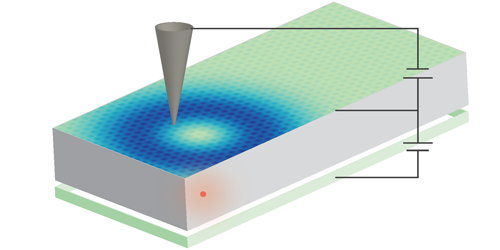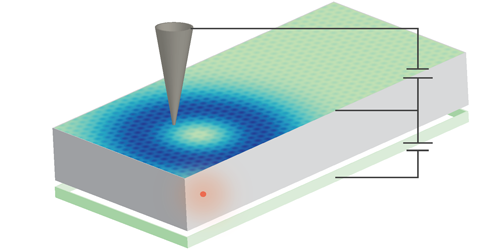Seeing Anyons with an STM
Two main camps of particles rule the quantum world. Bosons are happy to share their quantum states with each other, while fermions insist on being alone. But there might be a third faction: anyons, which straddle the boson-fermion divide. Anyons are quasiparticles that can emerge when electrons are confined to two dimensions, but they are hard to study experimentally. Now Zlatko Papić of the University of Leeds, UK, and colleagues show that a scanning tunneling microscope (STM) could root out these exotic quasiparticles. Not only might this approach deliver unambiguous signatures of anyons, but it could also identify certain anyon types that could be useful for quantum computing.
Anyons are thought to arise in a state of matter known as the fractional quantum Hall phase. In this state, the measured electrical resistance implies the presence of quasiparticles that carry a fraction of the electron’s charge. These fractionally charged particles, according to theory, obey anyonic statistics. Typically, the quantum Hall phase thrives too deep inside semiconductors to be probed by surface-sensitive techniques like STMs. But the phase has been seen recently in graphene, an atomically thin material in which bound states of charged particles and quasiparticles can be seen by an STM.
The researchers combine analytical calculations with numerical simulations to demonstrate that an STM could detect the signatures of anyons in graphene. Scanning near a small defect such as a break in the lattice pattern—which is expected to trap anyons—an STM should pick up ring-like spatial patterns that are unique to anyons. The patterns should not only reveal the presence of anyons but also identify so-called non-Abelian anyons, which could enable fault-tolerant quantum computers.
This research is published in Physical Review X.
–Christopher Crockett
Christopher Crockett is a freelance writer based in Montgomery, Alabama.





